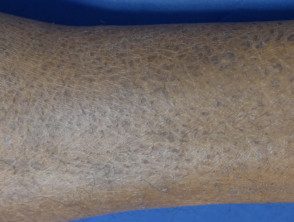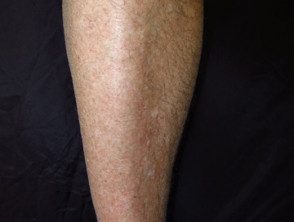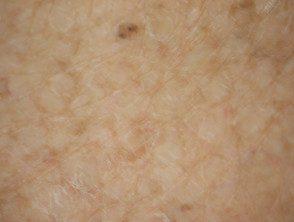What is it ichthyosis vulgaris?
Ichthyosis vulgaris is characterized by excessive dryness, scaly skin. It is the most common form of inheritance. ichthyosis. The name "ichthyosis" is derived from the Greek root "ichythys", which means fish, to which ichthyosis vulgaris owes its other names, "fish scale disease" or "fish skin disease"; "Vulgaris" means common.
Ichthyosis vulgaris can be inherited or acquired. This page focuses on the most common legacy form.
What causes ichthyosis vulgaris?
Ichthyosis vulgaris is the result of loss of function mutations at gene encoding the protein filaggrin (FLG), which maps to the epidermal differentiation complex in chromosome 1q21. The mutations lead to defective filaggrin production.
Filaggrin is a filamentepidermal protein associated with that required for the binding of curb fibers into epidermal cells, to form an effective skin barrier. Helps maintain skin. pH, retain moisture in the stratum corneumand reduce transepidermal water loss (TEWL).
xerosis or dryness results from reduced skin hydration associated with defective filaggrin. Excessive scaling results from the inability of the quadrats (skin cells) to stay hydrated as they move up through the stratum corneum. Hyperkeratosis results from compensatory repair mechanisms that increase cell proliferation.
Who gets ichthyosis vulgaris?
Ichthyosis vulgaris affects 1 in 250 people. Filaggrin mutations have been reported more commonly in Europeans; predominance in other breeds it is under investigation.
Ichthyosis vulgaris is a autosomal Semidominant condition. Semidominant means that a mutation in one gene of the chromosome pair results in a mild version of the disease, while a mutation in both genes in the chromosome pair results in a moderate to severe form.
What are the clinical features of ichthyosis vulgaris?
Symptoms vary in severity and tend to be less severe in a warm environment. damp climate.
- Ichthyosis vulgaris is usually not present at birth. Most of the time it appears after about 2 months and in most cases before 5 years. Symptoms may worsen until puberty and sometimes improve with age.
- Dry, scaly skin (xerosis) affects the extensor muscle appearance of the extremities, scalp, central face and trunk. Skin folds are generally preserved (neck, armpits, elbow and knee folds). There may be cracks (painful fissure ) of palms and soles.
- Ichthyosis vulgaris is associated with keratosis pilaris (follicular hyperkeratosis) and hyperlinearity (pronounced skin lines) of palms and soles.
Atopic dermatitis (eczema) is present in 50% of people with ichthyosis vulgaris (and 8% of people with atopic eczema have features of ichthyosis vulgaris). When atopic dermatitis is associated with severe ichthyosis vulgaris, the dermatitis tends to be early-onset, severe, and more likely to persist into adult life. There is also an increased risk of asthma, rhinitis and food. allergy.
Ichthyosis vulgaris

Ichthyosis vulgaris

Ichthyosis vulgaris

Ichthyosis vulgaris

Ichthyosis vulgaris
How is ichthyosis vulgaris diagnosed?
Ichthyosis vulgaris is usually a clinical diagnosis. Mild ichthyosis is often simply called "dry skin."
Research laboratories can detect filaggrin mutations from a buccal swab or saliva sample.
On the skin biopsy, histology shows hyperkeratosis in the stratum corneum and reduced or absent granular layer. Electron microscopy also shows reduced or absent keratohyalin granules, of which the main component is the protein pro-filaggrin, the precursor of filaggrin.
What is the treatment for ichthyosis vulgaris?
Treatment aims to reduce dryness, climbing, division and thickening of the skin. This is accomplished with exfoliation and moisturizing regularly and daily.
Treatments to keep the skin hydrated.
Apply emollients with height lipid content, as lanolin cream (a tallow-as a substance derived from animals with wool).
Treatments to reduce scale
- Bathing in salt water
- Apply creams or lotions containing salicylic acid, glycolic acid, lactic acid, or urea to exfoliate and hydrate the skin. These can irritate active eczema.
- Oral retinoids such as acitretin or isotretinoin may be prescribed in severe cases.
General advice
- Apply lotions and creams to damp skin to lock in moisture (within 3 minutes of showering/bathing).
- Lotion and creams can be stored under occlusion for 1-2 hours with a cling film wrap to improve skin hydration.
- Gently rub a pumice stone over damp skin to help remove thick, crusty skin.
- washing brush hair to remove scales from the scalp.

